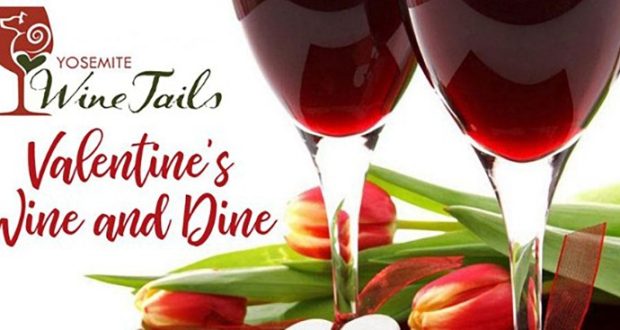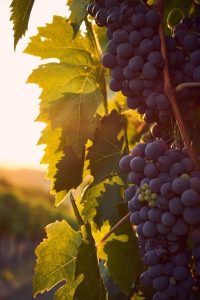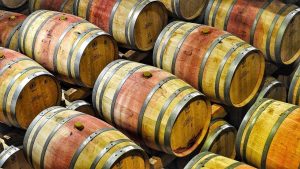OAKHURST — This Valentine’s Day, Yosemite Wine Tails presents five beautifully prepared dinner courses that will daze and amaze you and your sweetheart. This intimate five-course meal will be paired with award-winning wines from throughout California.
 Date & Time: Tuesday, February 14, from 5:30 – 9 p.m.
Date & Time: Tuesday, February 14, from 5:30 – 9 p.m.
Your romantic adventure begins at 5:30 p.m. with reserved parking out front and a brief meet and greet with your chef for this evening’s gastronomical delight.
Inside an additional appetizer awaits served by your chef and accompanied with the perfectly paired wine.
Hors-d’oeuvres and sparkling wine will begin the first course at 6 p.m. with the dinner course to be served around 7 p.m.
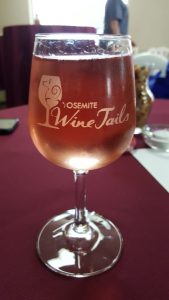 The cost of the Premium Reserved Wine Dinner is $129 per person. This includes all food and wine, plus a bouquet of red roses, table side champagne and a box of elegantly wrapped chocolates.
The cost of the Premium Reserved Wine Dinner is $129 per person. This includes all food and wine, plus a bouquet of red roses, table side champagne and a box of elegantly wrapped chocolates.
Reserved Seating is $99 per person which includes all food (vegetarian option included-but must be ordered ahead) wine and a red rose for your sweetheart.
Elite Seating is $600 for 4 people. All the stops are pulled out as your romantic table is graced with fine china, linens, elegant tableware, candles and dark chocolate truffles.
Click here to purchase tickets.
Check them out on Facebook!
Yosemite Wine Tails
40409 CA-41
Oakhurst, CA 93644
559-641-6400
How Exactly is Wine Made, Anyway?
Wine is a fermented alcoholic beverage made from grapes, and it has been enjoyed by humans for thousands of years. The process of making wine begins with the selection of grapes, which are then crushed and fermented to produce alcohol. Consider the various steps involved in the production of wine, from the harvesting of grapes to the final bottling process.
The first step in making wine is the selection of grapes. The type of grape used will determine the flavor, color, and body of the wine. The most common types of grapes used for wine making are Cabernet Sauvignon, Chardonnay, Merlot, Pinot Noir, and Syrah. The grapes are harvested by hand or machine, depending on the size of the vineyard and the type of grape. The grapes are picked at their peak of ripeness, when they have the ideal sugar and acid levels for fermentation.
Once the grapes have been harvested, they are crushed to release the juice. This can be done manually or with the use of a machine. The crushed grapes, known as must, are then transferred to a fermenting vessel, where yeast is added. The yeast consumes the sugar in the must, producing alcohol and carbon dioxide as by-products. This process is known as alcoholic fermentation, and it typically takes several days to complete.
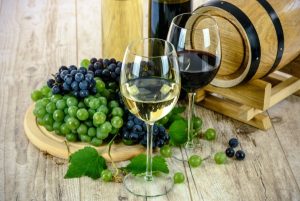 After the completion of alcoholic fermentation, the wine is transferred to another vessel for aging. This process can take several months or even years, depending on the type of wine being made. During this time, the wine is allowed to develop its flavor, aroma, and color. Some winemakers also add additional yeast or bacteria to the wine to produce a specific flavor profile.
After the completion of alcoholic fermentation, the wine is transferred to another vessel for aging. This process can take several months or even years, depending on the type of wine being made. During this time, the wine is allowed to develop its flavor, aroma, and color. Some winemakers also add additional yeast or bacteria to the wine to produce a specific flavor profile.
Once the wine has reached its desired flavor profile, it is time to clarify and stabilize the wine. This is done by removing any solids, such as dead yeast cells, from the wine. The wine is then filtered to remove any remaining solids and stabilize the wine, making it ready for bottling.
Before bottling, winemakers may also add sulfites to the wine to preserve its flavor and prevent spoilage. Sulfites are a type of preservative that are commonly used in wine making. Some winemakers choose not to add sulfites to their wine, instead opting for more natural methods to preserve the wine.
The final step in the production of wine is the bottling process. The wine is transferred to bottles, which are then corked and labeled. The bottles are then stored in a cool, dark place to allow the wine to mature and develop its flavor even further.
The process of making wine is a complex and time-consuming process that involves several important steps, from the selection of grapes to the final bottling process. The type of grape used, the length of aging, and the addition of yeast, bacteria, and sulfites are just a few of the factors that can affect the flavor, aroma, and body of the wine. Despite the many variables involved in wine making, the end result is a delicious and flavorful beverage that has been enjoyed by humans for thousands of years.
Check out this short video on the history of wine making!

